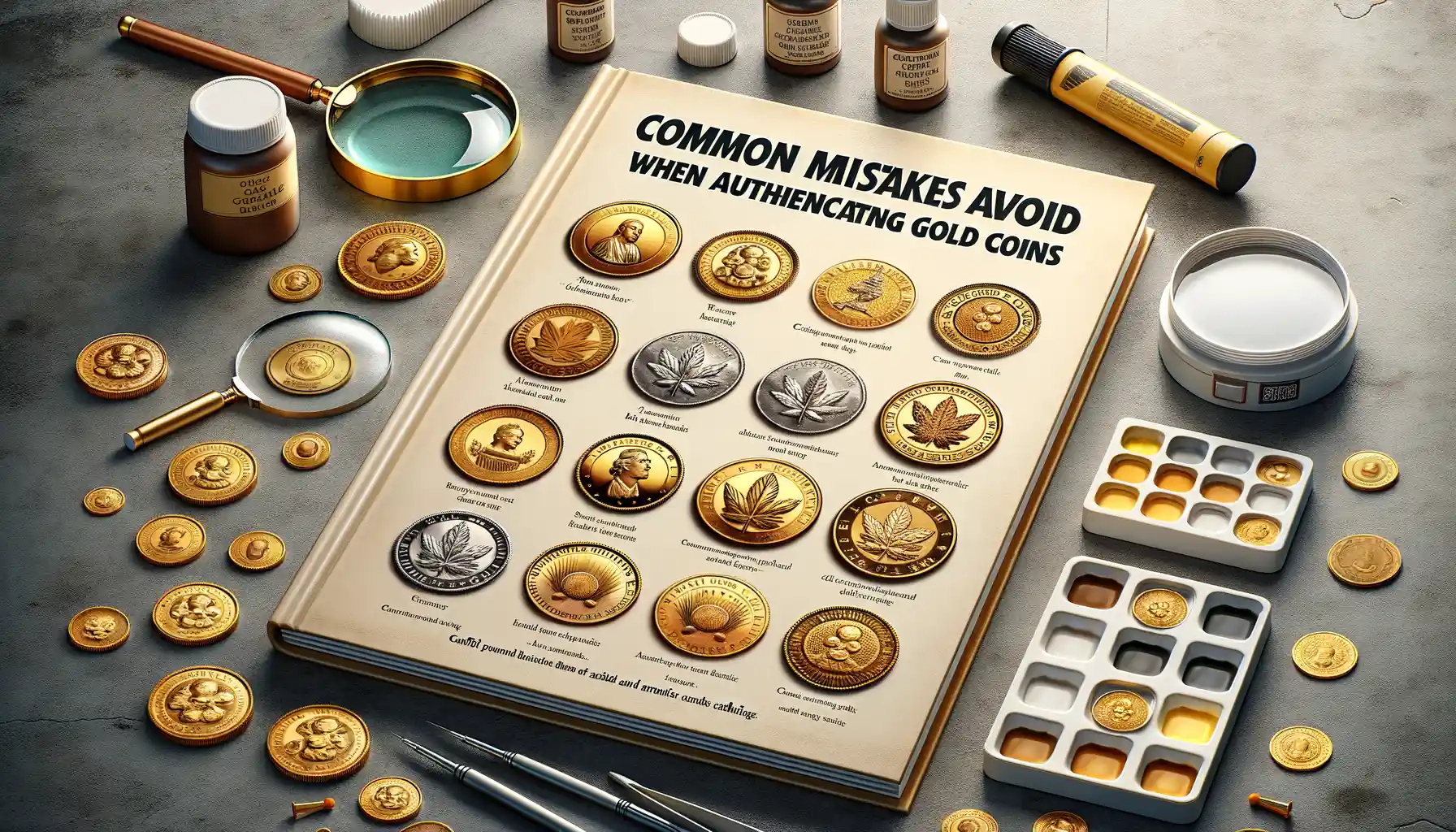How to Authenticate Gold Coins Like an Expert
Understanding the Basics of Gold Coin Authentication
Why Gold Coin Authentication Matters
Picture this: you’re holding what appears to be a gleaming gold coin, its surface catching the light like a tiny sun. It feels heavy, solid—real. But is it? The world of gold coins can be as full of deception as it is of beauty, and without proper authentication, that prized “gold” piece could be little more than a cleverly disguised imposter.
Gold coins are more than relics—they’re investments, symbols of history, and sometimes even family heirlooms. Knowing how to recognize an authentic piece isn’t just about protecting your wallet; it’s about preserving trust in what you own. Start by asking yourself:
- Does this coin’s weight match the official standard?
- Are the details—letters, borders, engravings—sharp or oddly smudged?
- Can I trace its origins through reputable channels?
Every genuine detail tells a story, while counterfeits stutter and stumble. Learning these basics is your first step toward becoming a true connoisseur of authenticity, peeling back the layers of doubt and discovering pure, unvarnished truth.
What Makes an Authentic Coin Stand Out?
An authentic gold coin doesn’t just look right—it feels right. Hold one between your fingers, and you’ll notice its distinctive density. Pure gold is heavier than most metals used for fakes. And the sound? Genuine gold has a melodic “ping” when tapped, unlike the dull clink of imposters.
Look beyond the surface shine. Authentic coins typically have crisp, intricate designs—whether it’s a roaring eagle or a majestic historical figure—and clear inscriptions. If the coin looks too “perfect,” it could be mass-produced fraud. Real craftsmanship leaves subtle imperfections that speak volumes.
Authenticity isn’t magic; it’s a skill you can cultivate. Begin here, and turn every coin from a question mark into a masterpiece worth treasuring.
Techniques and Tools for Verifying Gold Coins

Test Like a Detective: Simple Techniques for Verifying Gold Coins
When it comes to gold coins, your senses can be your first line of defense. Start by examining the coin’s weight and dimensions. Gold isn’t just beautiful; it’s dense and heavy. If the coin feels oddly light or the measurements seem slightly off, that’s your first red flag.
Next, get up close and personal with a magnifying glass. Look at the coin’s details—every marking, edge, and engraving should feel almost obsessively precise. Counterfeits often slip up on small things like blurry text or inconsistent borders. It’s like spotting a photocopy of a masterpiece!
For more precision, invest in a digital scale and calipers. These tools are lifesavers when verifying specific weights and sizes. And don’t forget the “ping test.” A real gold coin emits a clear, long-lasting chime when gently struck, while fake ones might give you a dull thud.
- Check with a magnet—gold isn’t magnetic, so if the coin reacts, you’ve got trouble.
- Use a jeweler’s loupe to spot tiny imperfections counterfeiters tend to miss.
Take your time. Authenticating gold coins isn’t about rushing; it’s about cultivating trust with each piece in your collection.
Common Mistakes to Avoid When Authenticating Gold Coins

Overlooking the Smallest Details
When it comes to authenticating gold coins, the devil is truly in the details—and skipping over these could cost you dearly. Imagine holding a seemingly flawless coin in your hand, only to discover later it’s a cleverly crafted fake. One common misstep? Focusing solely on weight and size. Yes, these are critical metrics, but a skilled counterfeiter can manipulate them to match the genuine article. Look beyond the basics! Scrutinize every letter, edge, and relief on the coin’s surface. A smudged font or uneven ridge might scream “fake” louder than any scale.
You’ll also want to avoid relying on one test alone. Gold’s authenticity is a puzzle; if you only check one piece, you’re playing a risky guessing game. Combine visual inspection with tools like a magnet or acid test—and don’t forget the sound test (a real gold coin produces a distinctive ring).
Mishandling or Overcleaning the Coin
Handling your gold coin wrong is an unforgivable sin. Think of it like touching a painting by Monet without gloves—just don’t do it! Always use clean, soft gloves to avoid transferring oils from your hands. And resist the urge to scrub away tarnish or dirt; overcleaning can erase telltale marks that prove authenticity.
Here’s a quick list of things to avoid:
- Using abrasive cloths or chemicals that may damage the coin’s natural patina.
- Rubbing the coin against a surface to “test” the metal—this is a huge no-no!
- Gripping coins too tightly, potentially leaving dents or scratches.
Treat your gold coins like rare and fragile treasures, because that’s precisely what they are.
The Role of Professional Appraisers in Authentication

Why You Need a Trusted Expert
Picture this: you’re holding a gleaming gold coin, admiring its shine, weight, and intricate design. You want so badly to believe it’s the real deal. But what if it isn’t? This is where professional appraisers swoop in like treasure-savvy detectives. Their role isn’t just to inspect—it’s to uncover the truth hiding in plain sight.
Unlike DIY methods, which can leave you tangled in uncertainty, an appraiser brings expertise honed over years. They know how to read the story every coin tells—its mint marks, subtle wear patterns, and even the peculiarities of its gold composition. And they don’t rely on instincts; they wield sophisticated tools like XRF analyzers or magnification devices, making them as precise as surgeons in their craft.
What Sets Appraisers Apart
Here’s why they’re indispensable:
- Access to advanced tech: Authenticating gold isn’t guessing—it’s science. Appraisers employ state-of-the-art equipment that can analyze purity down to its decimal points.
- A trained eye for rare variations: What looks like damage to you might actually be evidence of an older minting process, increasing the coin’s value.
- Impartial assessments: They’re not emotionally invested in the piece, ensuring a purely professional evaluation.
Entrusting your coin to an appraiser isn’t about doubting yourself; it’s about safeguarding what could be an invaluable piece of history—or just saving yourself from a polished counterfeit.
Tips for Safely Purchasing Authentic Gold Coins

Start With Reputable Sources
When it comes to purchasing authentic gold coins, trust isn’t just a virtue—it’s your lifeline. Always begin with sellers who have an established reputation. Think major mints, reputable dealers, and trusted auction houses. Avoid shady listings on random sites that scream too-good-to-be-true deals—because they usually are. For instance, if someone offers you a “rare gold coin” at half its market value, pause. Ask yourself: would a Ferrari ever sell for the price of a used bicycle?
A good starting point is checking if the dealer belongs to organizations like the Professional Numismatists Guild (PNG) or the American Numismatic Association (ANA). These memberships signal professionalism and higher standards.
Inspect, Verify, and Ask Questions
Before handing over your hard-earned cash, do a little detective work. Legitimate sellers won’t flinch at answering questions or providing detailed photos. When in doubt, bring out a simple checklist:
- Does the coin come with a certificate of authenticity?
- Can I verify this coin’s specifications (weight, dimensions) with official charts?
- Is there a return policy or guarantee?
Lastly, trust your gut. If something feels off, it’s a sign to walk away. Better a missed deal than a costly mistake.
